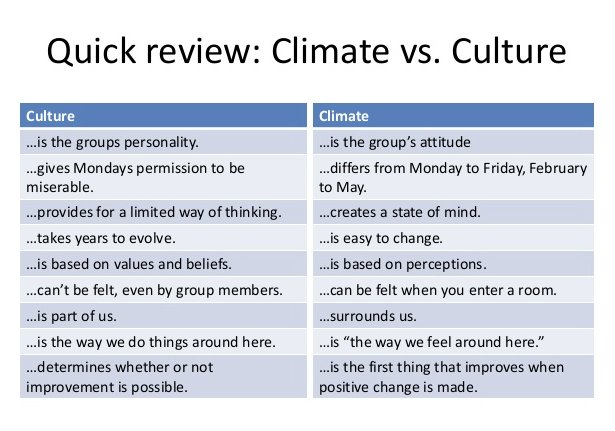Are you an instructional coach? If you are, then who’s the one person you want in your corner, supporting your efforts? If you said, “campus principal,” you are spot on. Research shows that, without principal support, many initiatives at the campus level fail. Whenever I wanted to push a technology initiative for the good of students and staff, I visited the principal. My campus principal knew how to bring people together, to problem solve and collaborate.
Let’s take a look at some of the ways principals can support instructional coaches. We’ll begin with three important aspects of introducing coaches to campuses.
#1: Cultivate Culture and Climate
If you are a principal, you are immediately responsible for the culture and climate of your school. Ignore the former at the risk of the latter. This truth became evident to me early on in my career. May I share with you how that happened?
When a colleague and I visited a campus in an urban school district, we were both shocked at the wave of negativity there. We felt it as soon as we stepped into the building. The campus radiated an aura of despair and sadness. Teachers we met with confirmed the feeling.
How had this happened? Even though the principal appeared happy and positive, the underlying culture appeared broken. Trust was lacking. The only values that mattered were the principal’s. Finding out why was easy. Understanding how took years.

Image Source: Culture and Climate
As an instructional coach, when you step onto a campus, you must share the values and norms of that space. Without that shared culture, you will fail. One person who can introduce you, who can vouch for you, is a principal who is in tune with campus culture and climate.
Actions to Take
The climate and culture of school mediate the principal’s impact on learning (source). Some ways to do that include:
- Identify existing school culture before trying to change it.
- Make culture (values) and climate (behaviors) transparent to all.
- Focus on long-term cultural goals to strengthen the learning environment.
- Achieve real change when you start with school culture, rather than the way the school works.
Culture and climate are bound together. Culture is the values and norms of a school, while climate is the behavior. Researchers report that norms, values, rituals, and climate are all manifestations of culture. Some define culture as shared norms, climate as shared perceptions.
Building a coaching culture involves focuses on shifting unwritten rules. You are shifting values, norms, behaviors, and practices. These build the foundation needed to spread a coaching mindset and practices. The goal is to ensure that coaching becomes a key part of the campus’ identity (adapted from source).
A culture-sensitive principal can assist coaches in navigating the campus cosmology. That is, how everything at that campus came to be. That includes its origin, its development, and what the people there value, as well as how those values manifest themselves in the behavior of a campus. If you want to foster a culture of learning and growth, do what Jim Knight suggests. “Principals need to do what they expect their teachers to do,” says Jim Knight.
Consider taking these actions on a consistent basis, adopting them slowly over time.
- Model the actions you want teachers to enact.
- Work together with staff to identify campus values and behaviors before changing them.
- Adopt norms, values, and rituals together that reflect who you are as a campus.
- Immerse instructional coaches in the campus culture and climate.
#2: Embrace Evidence-Based Approaches
Brain-based learning research has powerful implications for what we do in the classroom. But they also speak to our work as campus leaders. Engage the brains of students and staff with approaches that start positive. Work hard to cultivate emotional and physical safety in meetings and interactions. Communicate often, chunk learning, and use collaborative inquiry. Combine the new and unusual to maintain interest in activities that aid learning. Culturally Responsive instruction, wellness, and Social-Emotional Learning are critical.
Adapt evidence-based, instructional strategies for use in classrooms. The work of Mike Bell (author of The Fundamentals of Teaching) combines John Hattie, Robert Marzano, and others. The result is a way to cut low-effect practices that detract from learning. Bell brings together three areas, shown below, and offers up a five-step process.

Image Source: Video, The Fundamentals of Teaching
The five-step process relies on these strategies:
- Prior knowledge
- Presenting new material
- Setting challenging tasks
- Feedback and improvement
- Repetition and consolidation
You can find a summary of these ideas and others in the Amazing Lesson Design Outline (ALDO). It contains specific suggestions about strategies and digital tools.

Image Source: DianeSweeney.com, Lessons Learned: Team Coaching Cycles During Hybrid and Distance Learning
#3: Clarify the Coaching Vision and Model
As the instructional leader, involve coaches and campus staff to clarify the coaching vision. Decide on a specific coaching model. This can involve the following actions:
- Articulate clear roles and responsibilities for coaches.
- Outline a menu of services.
- Set up a schedule for one-on-one, small group, and large-group coaching activities.
- Use coaching cycles, and debrief coaches/teachers to ascertain effectiveness.
- Avoid combining appraisal and coaching; keep them far apart.
“Create rich opportunities for teachers and coaches to work together,” says Diane Sweeney. The focus must be on “key strategy or instructional practice.” She goes on to encourage you to track how students progress in combination with a new practice.
Begin your journey to supporting instructional coaching with these three guideposts. You will find the negotiation and conversation can be powerful and work affirming.

